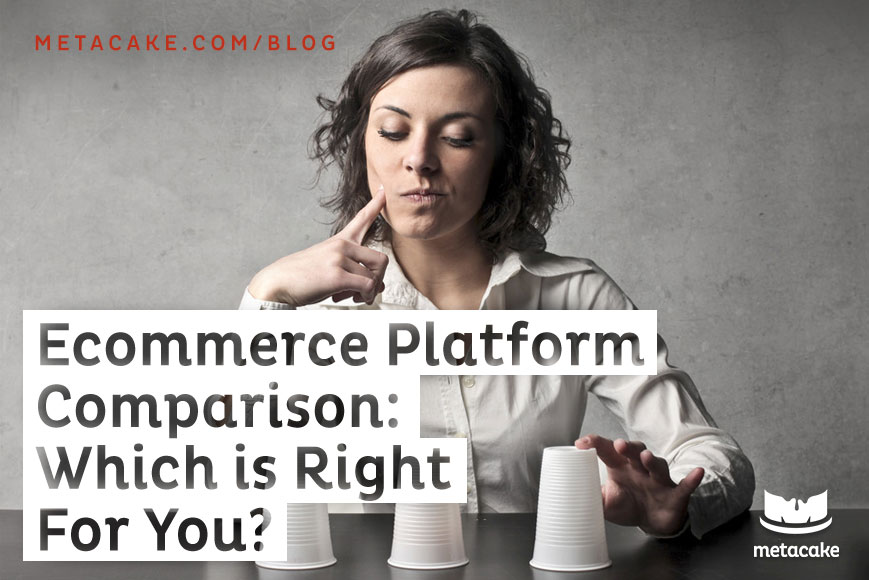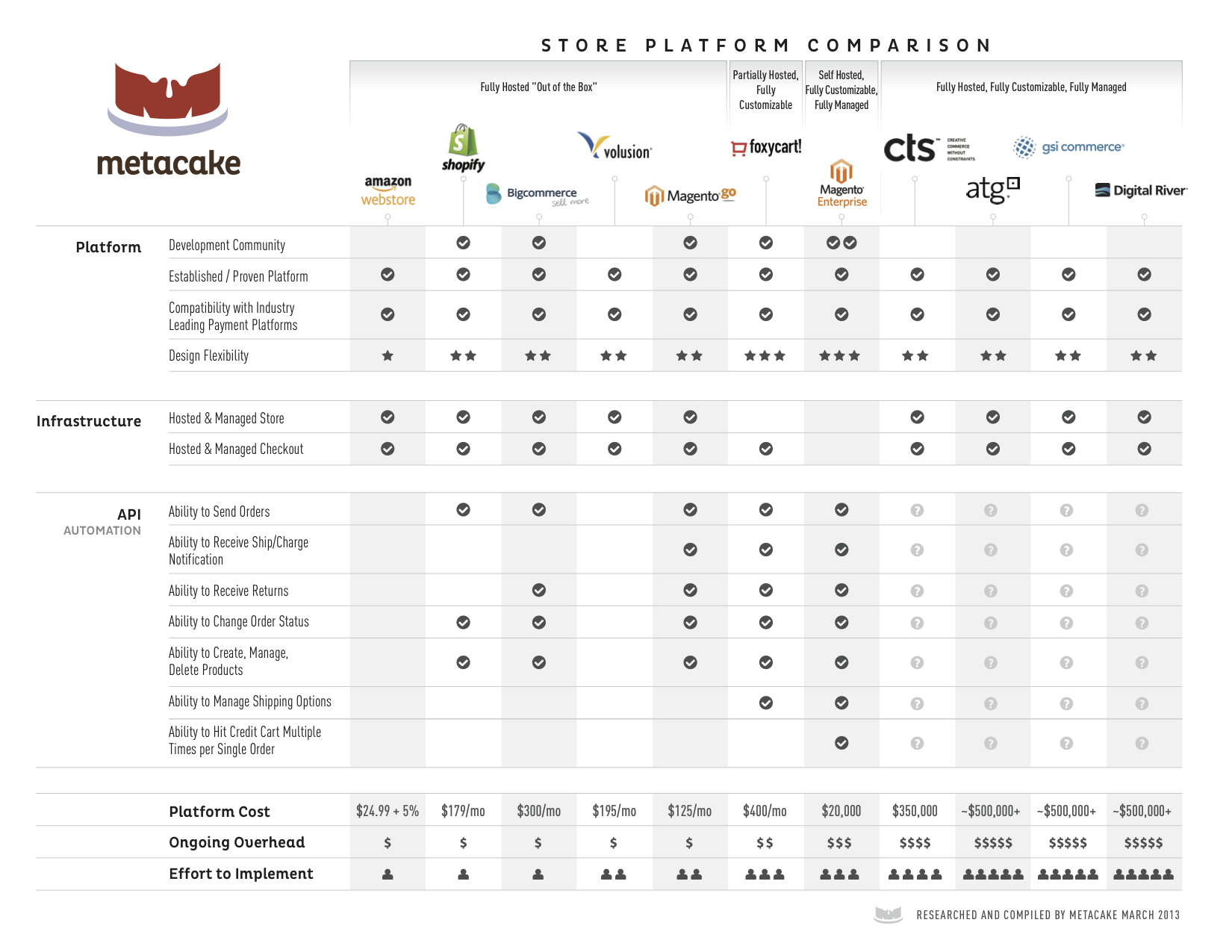Five years ago, there weren’t many choices when it came to setting up an e-commerce site. Any good available options were expensive and required some level of coding experience to maintain. Now, you have multiple ways to set up shop. This is great – except when you have to decide which platform is going to work best for your specific needs. Take a look at the chart we’ve created to help you make your choice:
Need a little help to decipher the chart? No worries, we’ve got you covered:
Self Hosted vs. Fully Hosted – What’s the Difference?
One of the first things you’ll notice is there’s a differentiation between fully hosted, partially self hosted, and self hosted.
Fully hosted is low risk and lower cost, but tends to come with limitations. It’s not 100% customizable. On the other end of the spectrum, you have self hosted: high risk and higher cost, but infinitely customizable.
What about the risk?
If you’re using a self hosted solution, that means you’re also hosting all the data associated with purchases – including credit card numbers and other private data. As you can imagine, especially in light of incidents like Heartbleed and the 2013 Black Friday security breach at Target, housing private data comes with a lot of responsibilities. You have to ask yourself if you want to be responsible for that level of security or if you want someone else to handle it.
For 99% of stores, the best option is for someone else to handle the data.
You’ll pay a little in transaction fees, but you’ll also pay a little less in initial maintenance and overhead.The big trade off is flexibility – you do have to work within a framework that someone else has created.
If you have specific business requirements that you’re unwilling to budge on, it can be hard to work around them with a fully hosted solution.
For example, some of our clients operate on the “subscription shipment” model – customers subscribe to get a monthly box of goodies that change every month. Many of these platforms don’t accommodate subscription-based products.
The Criteria We Judged:
Platform
We rated the robustness of the platform that was developed, including design flexibility. Can you apply any design you want to your store? Are there certain restrictions you must take into consideration? For example, can the “Buy Now” button only be red and on the left side of the screen?
The other factor we considered was the developer community – the knowledge around the platform. For example, with Shopify, there’s a large “help” section for the most popular themes. You can easily find answers to almost any theme-related issue by checking out the problems other people had and the solutions they used. But with Amazon, you must resort to digging around on Google for the answer, which is a more challenging experience for most people.
Infrastructure
The infrastructure is where scale and risk come into play. It mainly refers to the physical technology of the platform – the servers, codebase, where they’re hosted, etc. Building a high availability, scalable network infrastructure takes a lot of knowledge and money, so you probably don’t want to reinvent the wheel here unless it’s necessary.
With certain platforms, their host provides the infrastructure. This gives you immediate scalability and your uptime will be great without any investment on your part.
There are three segments here: out of the box, partially hosted, and enterprise.
API
API is most relevant to the non-enterprise solutions, because an enterprise-level solution will be fully customized. The API lets you extend the functionality of the platform and build on top of it. Tools with an open API are more flexible and can be customized to fit your needs.
For example, let’s say your store is hosted on Shopify, but your marketing site (your blog) is on WordPress. If you wanted to integrate your WordPress site with Shopify on your own, it would require a lot of coding – but with an API, you can easily integrate the two.
Pricing
Finally, we covered pricing, so you can see the bang you’re going to get for your buck.
And the Winner Is..
There’s no clear “winner” here because it’s so subjective. You must decide what’s best for your specific needs. Take a look at your budget, how specific your design requirements are, and what kind of integrations you’re looking for, and only then should you decide which platform to go with.

